Animation &Animation Artifacts &Disney 14 Jul 2011 07:18 am
Dwarf walk – recap
As I noted on Saturday last, I have a wealth of Bill Tytla animation on the past of this blog and I think it’s time to bring it forward for a recap. The stuff is too good and deserves more than a little study for ANYONE who calls himself an animator. This piece was originally posted in August 2009.
- Here are the drawings of Grumpy walking in a huff. Bill Tytla was the animator. The images come from a photostat which prepared the material for publication. A couple of these drawings appeared in the Thomas-Johnston book, Illusion of Life. The sequence, here, is missing drawing numbers 6,7 and 8.)
 1
1 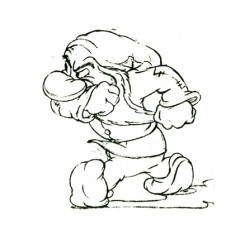 2
2Note how he starts with his shoulders high.
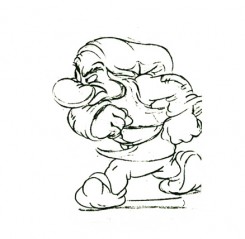 3
3 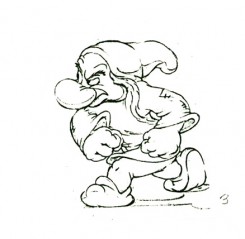 4
4
His bent leg, at this point, takes the weight of his body.
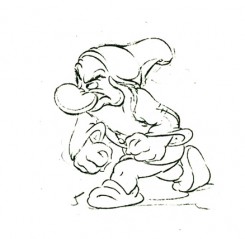 5
5 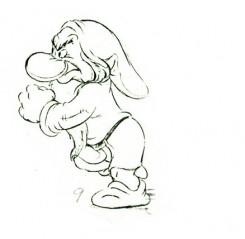 9
9
He moves his body up, high . . .
(Note that we’re missing drawings 6, 7, and 8.)
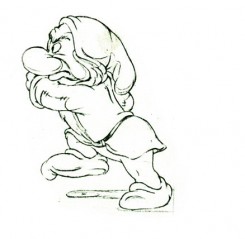 12
12 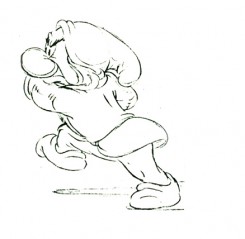 13
13
. . . then twists his entire torso.
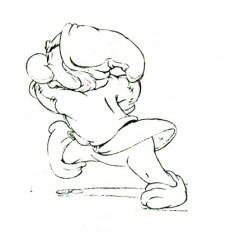 14
14 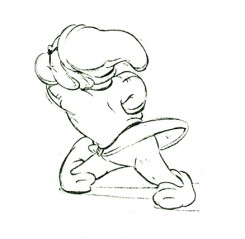 15
15
The straightened leg makes contact.
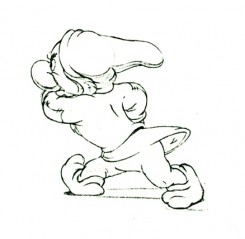 16
16 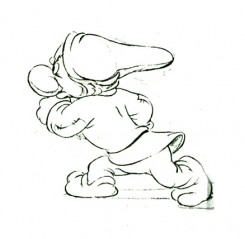 17
17
Again the shoulders go high as the pattern repeats on the other leg.
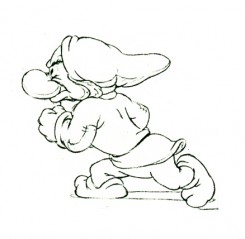 18
18 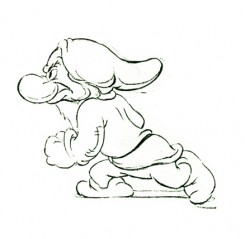 19
19
Note the detailed attention to the flow of the clothing throughout.
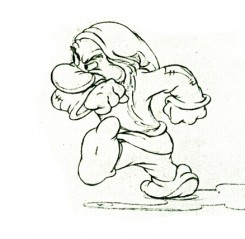 28
28
(Click any of the above images to enlarge.)
The following QT movie is on one’s with
the exception of dwngs #5, 9, & 11 on twos
to make up for the three missing drawings.
Right side to watch single frame.
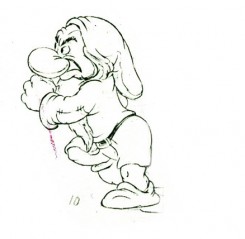
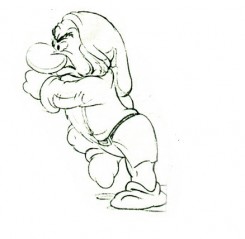
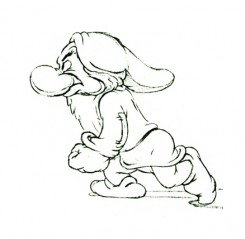
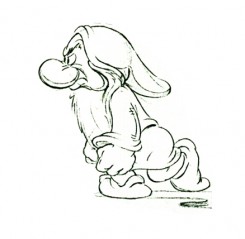
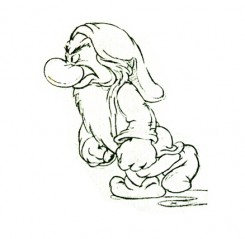
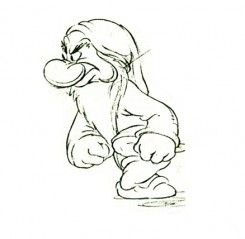
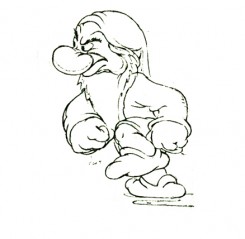
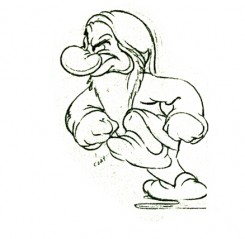
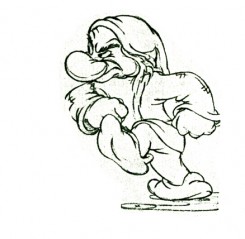
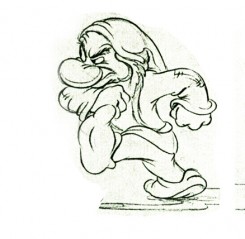

on 14 Jul 2011 at 12:33 pm 1.Heidi said …
“The stuff is too good and deserves more than a little study for ANYONE who calls himself an animator.”
I’d say ANYONE who calls himself an artist. This post is jawdropping.
on 14 Jul 2011 at 1:01 pm 2.Daniel Caylor said …
A great exercise would be to fill in the missing drawings. I’ll give it a go someday.
on 16 Jul 2011 at 12:37 pm 3.The Gee said …
I’m not sure if it would have been right to ask this in the Saturday indy animator posting even if it might be seen by you, so I’ll ask here because it’s more appropriate.
Mr. Sporn, or anyone for that matter, given Tytla did incorporate acting theory in his animation was he the only one who rigorously put Stanislavski’s method into practice? Or am I forgetting some of Graham or Stanchfield notes which went over acting?
(I want to say yes, to a degree but I don’t recall if Stanislavski was focused upon. I lost all of my PDFs of the Stanchfield notes earlier this year–hopefully no one knows those troubles; those troubles suck and thieves suck even more. I’ll get the book someday.)
Also, when the studio brought people, like S. Dali, in to speak to the crew, were there notes from those sessions? Does anyone know that?
on 16 Jul 2011 at 12:40 pm 4.The Gee said …
And….I know there are notes of Larson speaking on acting in animation, but, I was specifically wondering about method acting?
on 16 Jul 2011 at 3:22 pm 5.Michael said …
I don’t know of specific notes about acting theory. I know Tytla was involved with Stanislavski because John Hubley told me so. He had said there was a small group of people at Disney’s that were advocates of Stanislavski and “. . . the rest couldn’t spell Stanislavski.” I’ve only surmised that Tytla used his distortion to get under the emotions of the character – which he did even without the distortion. I suggest you look at Tytla’s lecture as well. You’ll see the references to using primary, secondary and tertiary forces in animating. It’s something he and Norm Ferguson took seriously.
on 17 Jul 2011 at 12:28 am 6.The Gee said …
Thanks.
I read through that batch. It is a good companion to the notes on Force vs Forms.
More stuff to consider though the Dwarfs lecture is largely about how difficult it is to nail the characters. Obviously, it still applies to a lot when applied beyond those specific characters, and really focuses on depicting personality visually, including nuances.
It is also a cleanser of sorts after the week’s earlier Action Analysis on the character stuck in the mud. (no wordplay intended)
In particular, some of the questions asked in that lecture left me dumbstruck. Mainly because they were comparing a character, an actor, they could see with one that was a generalized hypothetical.
And it seemed to say there was no way the two could be the same character, physically and in how they acted. Which is bizarre. Two different actors, say Chaplin and Shemp Stooge, sure. But, an actor and a hypothetical one? It was awkward reading that.
on 17 Jul 2011 at 12:39 am 7.The Gee said …
Just re-read that.
I should re-word that as “they were comparing an actor playing a character”
Not knowing who the actor was is a minor frustration because that is an important context. We don’t know what roles that person typically played.
Reading it just reminded me of a lecture I attended years ago that became partially about the character actor Stepin Fetchit. The more the speaker found out about biography of the man behind the character he portrayed the more he realized the guy was playing a character.
on 05 Aug 2014 at 5:45 am 8.Patria Goblirsch said …
Im happy about this